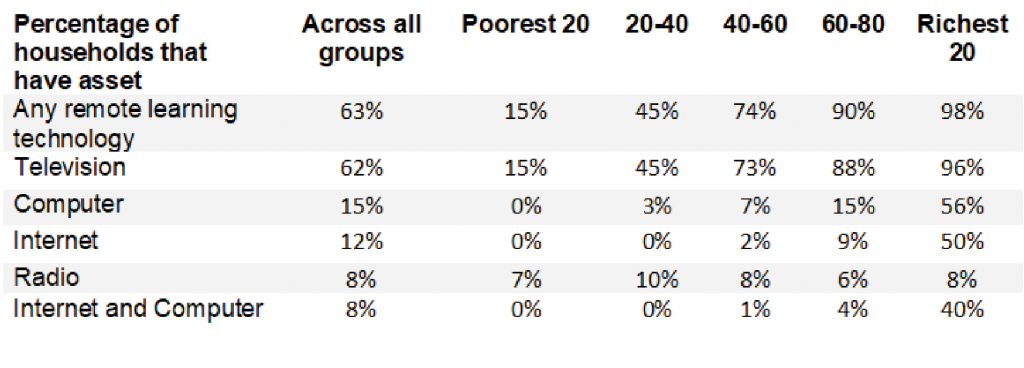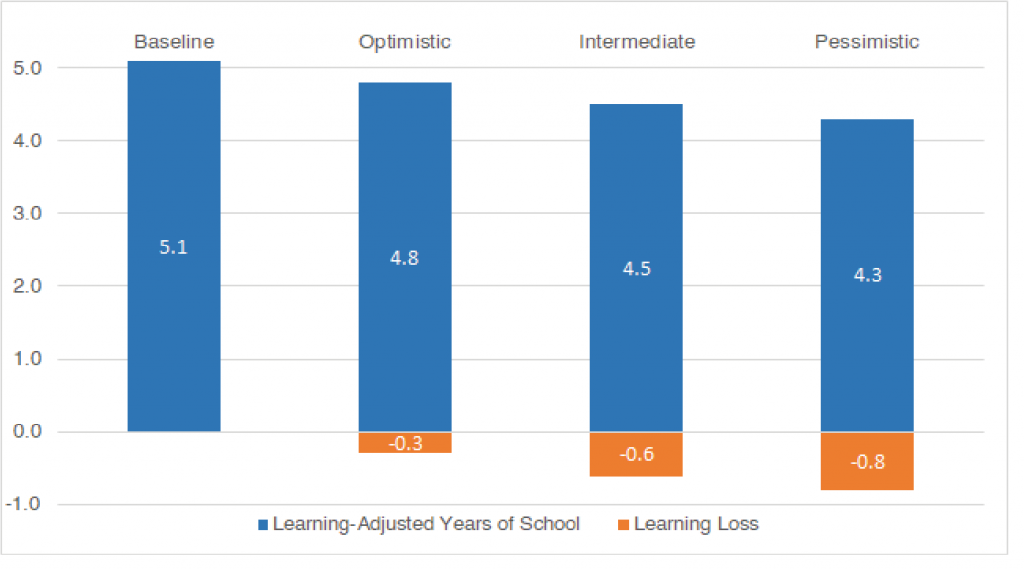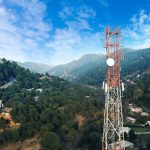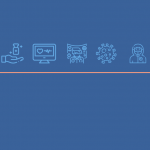Summary
• Low quality education reduces the effective learning period for Pakistani children that attend school from 9.1 years to only 5.1 years. This massive learning loss is a pre Covid-19 problem that is only exacerbated by school closures. Schools closures in 2020 will result in at least 0.8 years’ worth of additional cumulative learning loss.
• The World Bank estimates that the potential damage of school closures to the Pakistani economy (projected 20 years into the future) may be upto USD 155 billion. Based on consultations with stakeholders about current learning capacity, policymakers should identify a direction for this academic year’s learning goals and clarify expectations for student learning.
• As of September 2020, nearly 8 million girls who dropped out of school at the beginning of the pandemic remained out of school.
As school closures persist, the vulnerability of girls to early marriages and sexual exploitation will rise substantially. The potential bankruptcies of low-cost private schools will further exacerbate such risks for the estimated 20 million students that attend such schools. This is a national calamity in the making.
• A key lesson derived from school closures all over the world is that teachers are the central conduit for learning and remain vital in connecting students to their learning syllabi. Distance learning and inequities in digital access minimizes interactions between students and the teacher to a quarter of their original capacity. This means that the modes of interaction between students and teachers must be re-imagined.
Identifying the Problem
The inequalities caused by preexisting gaps in education and learning infrastructure around the world have been compounded with the arrival of Covid-19 pandemic and multiple nationwide school closures. On November 24, the Pakistani government shut down all schools for a second time in an attempt to contain a second wave of the virus. By the end of December, students will have spent less than one-third of the year attending school in full capacity. The transition from in-person learning to distance learning is characterized by three key challenges:
- Teachers are the central conduit for learning and connecting students to their learning syllabi. Distance learning minimizes interactions between students and the teacher to a quarter of their original capacity.
- Lack of assessment and engagement with the instructor hinders teachers from ascertaining learning losses, and students from assessing their own progress.
- Inequities in digital access prevent a standardized method of distance learning that is inclusive for all learners across the country.
These obstacles place pressure on students who are already struggling to complete the syllabus they missed last academic year, when schools came to a halt without warning. Despite attempts to curate an effective and inclusive remote learning strategy, multiple school re-closures and associated learning loss will have long-term social and economic implications for a country with an already weak education system. In order to minimize both the dropout rate and a learning loss of unprecedented proportions, steps must be taken at all levels to ensure that efforts to contain the virus are not made at the expense of student learning.
Why does the Problem Exist?
Student learning remains in jeopardy due to a number of factors:
Lack of a Policy Focus on Learning: There has been no data gathering exercise during the first wave which could have informed policymakers on learning losses and expected student learning trajectory. After schools re-opened in September 2020, much of the policy direction at the federal and provincial levels was focused towards preventing transmission of Covid-19 in educational institutions so that they remain functioning. Despite an adjusted syllabus and a potentially extended academic year, limited capacity forced students and teachers to fend for themselves as they struggled to complete both this academic year’s syllabus and missed learning from last year. Staggered academic schedules, required to maintain physical distancing, have reduced time in school even further. Unclear expectations for the 2020-2021 academic year require teachers to prepare for several scenarios that are contingent on the length of the academic year, exam policies, and the possibility of future school closures.
The Digital Divide: Inequities in digital access reduce communication between stakeholders and prevent a standardized, inclusive method of distance learning. Only 14% of the population has access to computers or laptops [i]. Despite making up 60% of the population, only 24% of rural communities have Internet access and only 7% own computers. The first round of school closures happened in tandem with an economic shutdown, which forced working parents to stay at home and made their mobile phones available for educational use. As businesses otherwise continue in the second wave, students are left with fewer digital resources at home. Some teachers have reduced digital reliance by providing physical learning packets – these non-digital distance learning strategies however are extremely limited.

Limits to Instructional Programming: Televised educational programming was launched in Punjab and nationally as a distance learning solution for children without Internet; however, uptake remains low due to factors such as linguistic barriers, limited TV access, and difficulty in deciphering programming. In Punjab, only 30% of households were aware of these remote learning opportunities while only 10% made use of them. To reach families without television, policymakers have worked to provide educational programming through radio channels during the second wave. However, such strategies have limited impact at best. They also do not allow students to measure their progress nor do they provide mechanisms for feedback. These challenges limit understanding of the level of learning loss and accordingly design adequate interventions.
Weak Support for Learners at Home: Limited communication between teachers and students have made parents the central figure in the at-home learning process. However, the most severe levels of learning loss will occur in households with limited income. Parents in such households continue to mitigate the economic burden caused by the Covid-19 pandemic, which shrunk employment by over 20%, and therefore may not be able to attend to their children in the required capacity. Distractions within the household also limit students’ ability to focus on learning. Furthermore, minimized interactions with peers due to lockdowns may affect student mental health.
Limited Teacher Capacity: Despite being central to learning, teachers continue to face challenges associated with remote teaching due to limited capacity. Teachers are often required to spend their own salaries on purchasing internet packages to teach online and provide physical learning packets. This becomes especially difficult when schools cut funding and salaries in order to maintain pre-pandemic profit levels.Furthermore, 60% of Pakistani teachers are women who are now obligated to raise and teach their children full time, restricting them from devoting necessary attention to their teaching workload. Workloads have also increased as a result of academic expectations and logistics that are subject to change at any given moment due to health conditions.
Importance and Implications:
While Pakistani children currently attend school for 9.1 years on average, realistically only 5.1 years of learning are gained due to the low quality of education. According to World Bank estimates, with a second school lockdown resulting in a total of seven months closure of schools in 2020, the total learning loss is expected to be equal to 0.8 years. Furthermore, research on the 2005 earthquake’s impact on Pakistani children suggests learning losses may worsen over time because of the cumulative nature of learning. In terms of economic loss, students can lose up to USD 445 in yearly earnings. This figure, projected twenty years into the future, could cost the national economy up to USD 155 billion in GDP.
During the first lockdown, over 26 million students stopped attending school, with only 50% returning in the fall. 60% of the children who did not return were girls. These figures are expected to increase through additional school closures especially as low-cost private schools risk closing permanently. Over 20 million students are at risk of becoming out-ofschool children. Based on global findings, dropouts will pressure children from low-income households into child labour and specifically expose girls to a higher risk of gender-based violence, forced marriages, and domestic chores.

Recommendations
1
Identify the Scale of Loss and Focus Policy Direction Towards Mitigation
Federal and provincial departments of education should implement a data monitoring system that measures the scale of learning loss in order to understand the effectiveness of current distance learning strategies and to design essential learning objectives for the academic year accordingly. Policymakers must redirect priorities to remedial learning so that learning losses are mitigated, and foundational skills are not lost. The planned national data regime for learning assessments must be fast tracked.
2
Expand the Defination of Right to Education
Lawmakers should extend Article 25A of the Pakistan’s Constitution, in which children between ages 5 to 16 are guaranteed the right to free and compulsory education, to secure digital connectivity for all learners. In an era that requires robust digital infrastructure to ensure that learning continues, the definition of a child’s right to education must also include right to digital connectivity. Improving digital access can also be expedited by creating mobile hotspots in remote and rural areas of Pakistan through public-private partnerships between the government and telecommunication companies.
3
Smart School Lockdowns
The decision to close schools may need to be driven by the level of risk posed by Covid-19 in a certain area, as opposed to a nationwide shutdown, thus allowing schools to remain open in areas where Covid-19 poses a low risk. Schools that face lower risk are often located in rural and remote areas that lack capital, teacher preparation, and digital readiness. Smart lockdowns would both increase overall opportunities for in-person learning while also allowing under prepared schools in remote and rural areas to remain open.
4
Strengthen Communication between Policymakers and Stakeholders
For effective preparation, teachers and schools require clarity about expectations for the academic year both in terms of logistics and learning curriculum. Policymakers must therefore communicate with teachers by holding consultative sessions to both provide clarity about the academic year and to assess learning levels when quantitative data is not available. Consistent communication between teachers, students, and parents must also be prioritized to ensure that students remain motivated to learn. In the wake of school closures, means of interactions between students and teachers may need to be re-imagined.
This material has been developed by Tabadlab in partnership with DRI. It has been funded by UK aid from the UK government; however, the views expressed do not necessarily reflect the UK government’s official policies.
End Notes
[i] ‘Pakistan Bureau of Statistics.(2020, June). Pakistan Social and Living Standards Measurement Survey (2018-19). http://Covid.pbs.gov.pk/sites/default/files//pslm/publications/pslm2018-19/pslm_report_2018-19_national_provincial.pdf
[ii] ‘Value of monthly exports from China from November 2017 to November 2020’. Statista. https://www.statista.com/statistics/271616/monthly-value-of-exports-from-china/#:~:text=In%20November%202020%2C%20Chinese%20exports,period%20of%20the%20previous%20year
[iii] ‘Economic Impact of Covid-19 on Pakistan’. Institute of Cost and Management Accountants of Pakistan. https://www.icmap.com.pk/images/covid19/EconomicImpact_of_COVID19_on_Pakistant.pdf
[iv] ‘Inflation Snapshot’. State Bank of Pakistan. https://www.sbp.org.pk/ecodata/MPM-New.pdf
[v] ‘Exports Fall by a Massive 47.24% in April 2020’. Jehangir Nasir, Pro Pakistani, May 2020. https://propakistani.pk/2020/05/06/exports-fall-by-a-massive-47-24-in-april-2020/
[vi] ‘Pakistan’s exports crossed $2 billion in October’. The Nation, Nov 2020. https://nation.com.pk/03-Nov-2020/pakistan-sexports-crossed-dollar-2-billion-in-october
[vii] ‘LSM sector shrinks 10.2% in last fiscal year’. Shahbaz Rana, The Express Tribune, Aug 2020. https://tribune.com.pk/story/2259240/lsm-sector-shrinks-102-in-last-fiscal-year
[viii] ‘Pakistan Economic Survey 2019-20’. Ministry of Finance, Jun 2020. http://www.finance.gov.pk/survey/chapter_20/03_Manufacturing_and_Mining.pdf
[ix] ‘Surgical goods, medical instruments exports surge 9.56pc’. The Nation, Jan 2020. https://nation.com.pk/28-Jan-2020/surgical-goods-medical-instruments-exports-surge-9-56pc
[x] ‘Pakistani manufacturers hope to earn $2 billion by exporting PPEs, hand sanitizers’. Khurshid Ahmed, Arab News, Jul 2020 https://arab.news/2bbwb
[xi] ‘Coronavirus – The Situation in Pakistan’. Flanders Investment & Trade, Nov 2020. https://www.flandersinvestmentandtrade.com/export/nieuws/coronavirus-situation-pakistan
[xii] ‘Pakistani manufacturers hope to earn $2 billion by exporting PPEs, hand sanitizers’. Khurshid Ahmed, Arab News, Jul 2020 https://arab.news/2bbwb
Aliza Amin is a Policy Associate at Tabadlab’s Centre for Digital Transformation, where she is responsible for research and analysis of the policy landscape, evolution of digital ecosystems and advisory for transformations. She has been a researcher at Wellesley College and MIT and has worked with non-profit organisations in Pakistan, Morocco and the United States. Aliza graduated from Wellesley College in 2020.







